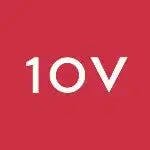Examining Stretch Goals and How OKRs Can Help Set Them
Stretch goals are a great way to engage and motivate employees. While OKRs can be used to help set purposeful goals and keep your team on track.
26 January 2023

Team leaders, project managers, and senior managers should be aware of the importance of setting goals for employees.
It's a great way of keeping your team motivated, engaged and helping to move them in the right direction.
When we talk about setting goals, we often concentrate on them being realistic and attainable, which is important.
These are called smart goals, which stand for specific, measurable, achievable, realistic, and timely.
However, there are times when we all need a little more of a push—the opportunity to try something new and be challenged to go even further. These are stretch goals.
Here, we will look at what stretch goals are, the benefits of stretch goals, and how OKRs (objectives and key results) can help with setting stretch goals.
What is a stretch goal?
A goal that is considered ambitious and will require a significant amount of work to achieve is known as a "stretch goal" or "stretch objective."
On purpose, these goals are set higher than normal standards, and they push team members to go beyond the limits they set for themselves.
One of the most important parts of what it means for a goal to be a "stretch goal" is that it must be possible that it won't be completely reached or may even fail.
If a team member hasn’t achieved a stretch goal, that doesn't mean they aren't doing their job.
It is vital for a member of the team to learn from their mistakes and set new, more challenging goals based on the information they have gained.
Setting stretch goals is meant to encourage personal growth and keep team members from getting too comfortable in their work environments.
What is the difference between a stretch goal and a smart goal?
Smart goals are set with the intention of being achieved, and this is what distinguishes them from stretch goals.
The purpose of setting stretch goals is to encourage members of a team to think on a much bigger scale, move beyond their comfort zones, and stretch themselves in order to become more skilled in their work.
This is where there is a natural connection between stretch goals and OKRs.
What are the benefits of stretch goals?
You, your team, and your organisation as a whole can reap the benefits of setting stretch objectives in a number of ways, including the following:
Increases motivation and employee involvement
Increases the organisation's chances of success — even if goals are not completed 100%, you will still likely achieve more than you would otherwise
Maintains team cohesion and fosters more collaboration in order to accomplish ambitious goal
Gives team leaders and managers more information and makes them want to make better decisions in the future.
When implemented properly, stretch goals will challenge the members of a team, keep them focused on their own personal growth and development, and discourage them remaining in their comfort zones and not progressing any further.
What are the challenges of implementing stretch goals?
Setting ambitious objectives brings with it a wealth of advantages, but it also brings with it a number of challenges, some of which include the following:
Stretch goals could be unnecessarily vague or unclear, which could cause a rift between the members of the team and the leaders of the team.
If team members don't have the right skills and haven't been given the right training, it will be hard for them to make real progress toward reaching stretch goals. This can lead to frustration and a lack of long-term drive.
When employees are unable to accomplish stretch goals, it may put a dent in their confidence
These goals could make people on the team get tunnel vision and forget about their other tasks.
Some people on the team might use questionable methods to say that they have met their stretch goals.
The good news is that team leaders and managers can circumvent many of these obstacles that are linked with stretch goals by planning and giving serious consideration to the goals they set.
Setting stretch goals for your employees
Now that you have an understanding of what it means to have stretch objectives, let us go over the actions that you need to take in order to set goals like this for your employees:
Open ended questions:
When you are talking to your employees, ask them questions to help set the goals. These questions for stretch goals include:
What would be the best result?
How can we provide better service to our clients?
How can we provide more value as an organization?
Allow for autonomy
When it comes to achieving stretch goals, it is important to allow your staff the freedom to create strategies to enable them to meet the goals.
It goes without saying that you should be there to support them, give them feedback, and enable them to use their own initiative as well.
Give them time
Provide your team with a sufficient amount of time to accomplish their stretch goals, or at the very least, to make as much progress as they possibly can.
Using OKRs to set stretch goals
OKR stands for Objectives and Key Results. It is collaborative tool and a way for everyone on a team to work together to set goals and measure problems and aspirational team goals.
OKRs can make it easier to monitor progress towards achieving goals, synchronise strategies, and foster collaboration among team members.
The most important aspect of utilising stretch goals alongside OKRs is effectively explaining the reasoning, expectations, and thresholds for success associated with those goals.
Many businesses consider it a success if they reach 70% of their goals, but if they reach all of their OKRs, that is seen as a remarkable performance.
When we set our sights exceptionally high, even when we fall short of our targets, we make significant strides forward.
When adding stretch objectives to OKRs, make sure to remain realistic. Take note of what is possible and what cannot be done.
Maintain focus on the following critical components of OKR goal-setting:
1ovmany's OKR Canvas Tool was designed for the purpose of guiding a team or stakeholders through the process of crafting OKRs.
It's a perfect example of how OKRs can help conceptualise stretch goals, walking you and your team through a 4 stage process of:
= Determining the team's value proposition; = Identifying challenges, blockers & aspirations; = Prioritising activities; = Crafting of the Objectives & Key Results.
Objectives: what you want your team to accomplish
Key results: How it is accomplished
Stretch Goals:
Final considerations
Goals that require a significant amount of work and effort are considered stretch goals.
They push the members of your team beyond the boundaries of their comfort zone and establish new standards for performance.
When it comes to setting goals for an organisation, stretch goals are great to use because they not only boost motivation, but they also encourage new ideas and make everyone more creative.
However, there are challenges that cannot be ignored and should be considered carefully.
To make effective use of stretch goals, one must first engage in careful goal planning.
This means, among other things, asking questions with open-ended answers, setting goals with target ranges instead of a single data point, making sure that teams have enough time to reach their goals, and combining stretch goals, strategic business objectives, and OKRs.
OKRs are a great method of conceptualising stretch goals, as they help form the basis of why it is that we're setting these goals and act as a roadmap towards achieving them.
For more support with setting stretch goals for your employees and using OKRs, get in touch with 1ovmany today!

About the author
1ovmany Communications Team
We help organisations reach their full potential through continuous and sustainable transformation in customer delivery and product excellence





















